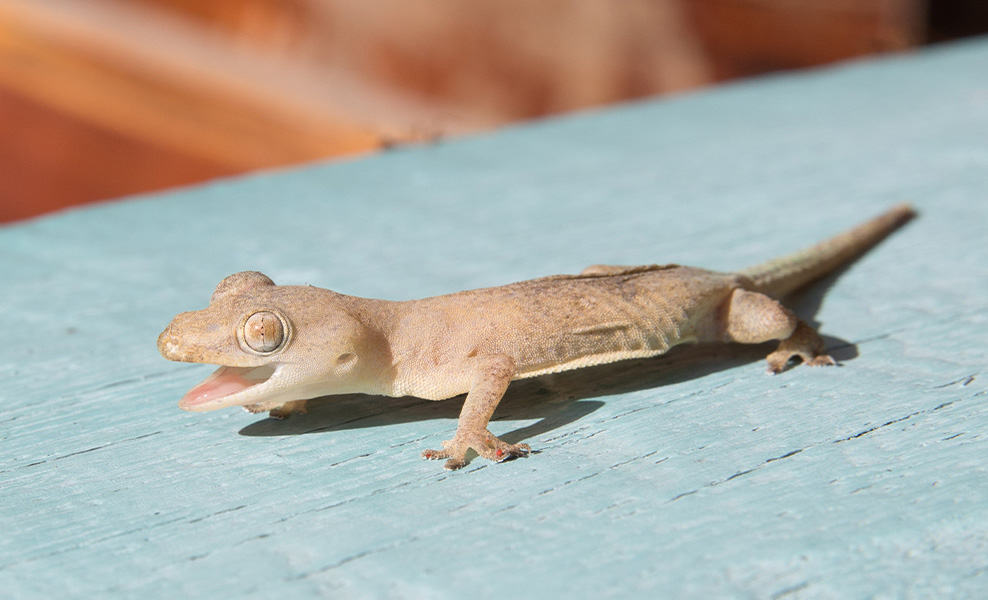They’re behind your clock. They’re in your curtains. They’re laying eggs in your knickknacks. They’re your constant housemates, so we might as well learn more about the common house gecko.
Costa Rica is home to 13 different species of geckos. One of, if not the most, abundant species, the common house gecko (Hemidactylus fenatus), isn’t originally Tico. Like myself and the cattle egret, this gecko is an immigrant. Originally from southeast Asia, they most likely stowed away on cargo ships and then spread from port cities to just about the entire country.
They were able to successfully spread to every corner of Ticolandia because of the habitat that they prefer. They live in and around our houses. Using specialized scales on the bottoms of their toes called lamellae, common house geckos live in a vertical world. They hide among the window frames and gutters on the outside of your house and behind the paintings, furniture, and mirrors on the inside of your house.
Mostly hidden during the daylight hours, their presence can be felt via the chirp, chirp, chirp noise that they make while defending their little territories from their counterparts. They emerge from their hiding spots in the cover of darkness, only to quickly skidder away like cockroaches when you flick the light on.
House geckos live in and around our houses because we attract their food: bugs. Costa Rica’s insects are mostly attracted to our houses because of our electric lights. House geckos take advantage of this situation by chowing down on all of those delicious bugs. This can be easily witnessed by going outside onto your porch on literally any night ever. They themselves are also an important part of the food web, being eaten by all sorts of reptiles, birds, and mammals. Great-tailed grackles frequently inspect the bars around the windows at my house and scarf down any gecko that isn’t sufficiently hidden away.
Male house geckos are generally larger than females. Females produce clutches of two hard-shelled little white eggs that they’ll happily hide all over your house. Sometimes multiple females will lay their eggs together in one location. One location they seem to love at my house is the inside of my older son’s computer printer.
There are pluses and minuses to sharing your house with common house geckos. I’ve always loved reptiles, so I still get a little charge out of seeing them run around my house. My younger son loves them too, shouting “Tiny lizard!” every time he sees them running around the upper parts of our walls. They also help keep the bug population down, which is helpful. The bummer part of living with geckos, and the part my wife hates the most, is that after they’re done eating and processing our house’s insects, they drop little poops all over the place.
When my wife complains about the poop, which looks like a little oblong black ball with a white speck on it, I tell her a joke from an old Kurt Vonnegut book. He was talking about bird poop, but it applies to geckos, too. Want to hear it?
¨What’s the white stuff in gecko poop?¨
¨That’s gecko poop, too.¨
She never laughs. Did you?
About the Author
Vincent Losasso, founder of Guanacaste Wildlife Monitoring, is a biologist who works with camera traps throughout Costa Rica. Learn more about his projects on facebook or instagram. You can also email him at: vincent@guanacastewildlifemonitoring.com

